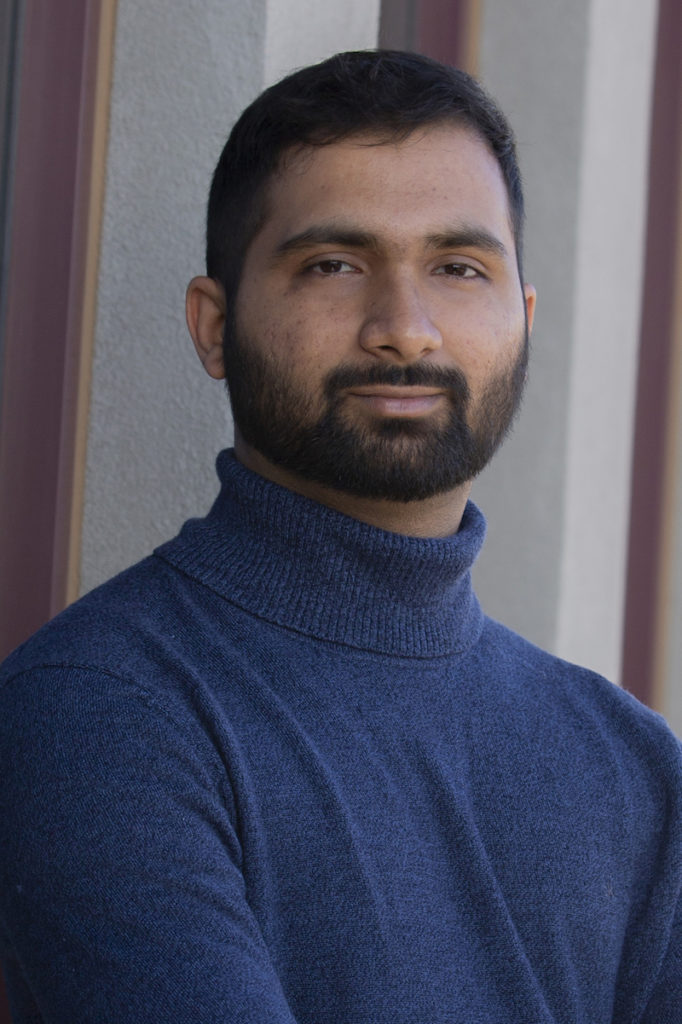
Dean's Dissertation Award, Fall 2018
Karthik Subramaniam Pushpavanam
Karthik Subramaniam set out to solve a problem that had never been attempted before. He just didn’t know what that problem was.
Luckily for him, his graduate advisor, Professor Kaushal Rege, had one ready for him to tackle: to affordably and easily verify the dosage of radiation delivered to cancer patients.
Subramaniam is the recipient of the spring 2019 Dean’s Dissertation Award for his dissertation “Radiation-induced nanoparticle formation as novel means of in vivo / in vitro dosimetry.”
Radiotherapy is one of the most commonly employed forms of treatment for cancer. One of the big challenges during radiation treatment is the ability to verify the radiation dose delivered to the patient.
“Available sensors for radiation dose measurement are either expensive, cumbersome to operate, require trained professionals for operation and/or lack post-irradiation stability,” he says. “What we set out to accomplish was to develop a sensor that is easy to fabricate and operate.”
This sensor, upon exposure to radiation, changes color and the change in color is proportional to the amount of radiation the sensor was exposed to.
“What we have accomplished so far, and there is still a long way to go in advancing what we have done, is unique,” says Subramaniam. “That was exciting enough for me to keep on going and pursue this as my thesis work.”
He won second place in the Nanoscale Science and Engineering Forum poster session at the 2018 American Institute of Chemical Engineering Annual Meeting in Pittsburgh.
One of Subramaniam’s best memories associated with ASU happened before he even arrived on campus.
“It was the moment I received the offer from ASU to pursue a doctoral degree there,” he says. “I still remember as clear as day how happy I was after I got the offer.”
Subramaniam’s passion for engineering started early as his father is a professor of chemical engineering in his native India. That passion steered him toward ASU as he wanted to pursue his own research goals.
“The biggest reason for me to enroll at ASU was the ambition shown by the university to grow and develop into one of the top research-oriented schools in the country,” he says. “Since 2012, when I began my doctoral degree in chemical engineering, the number of faculty recruited has steadily gone up, justifying my choice of school.”
Subramaniam mentored undergraduate students at ASU on their Fulton Undergraduate Research Initiative projects and master’s students for their theses.
“My mentees had varied educational backgrounds and I had to adapt and relearn things so that they could all constructively contribute to the growth of the project,” he says. “But the times when they start attempting creative experiments independently or suggest inventive ideas for my thesis made it all worth my time and effort.”
After he graduates, Subramaniam is looking into postdoctoral positions with aspirations of teaching.
“I am looking to gain a different set of expertise to complement the skills I already have, which will be useful in a potential career in academia,” he says. “My long-term career aspiration is to be a faculty member. I dream of a life where I can create an environment where people can be curious, just like kids.”
His advice for his fellow students and researchers is to not dismiss a “failed” experiment.
“Learn from them about why it ‘failed,’” Subramaniam says. “I learned a lot from my numerous failed experiments.”




































